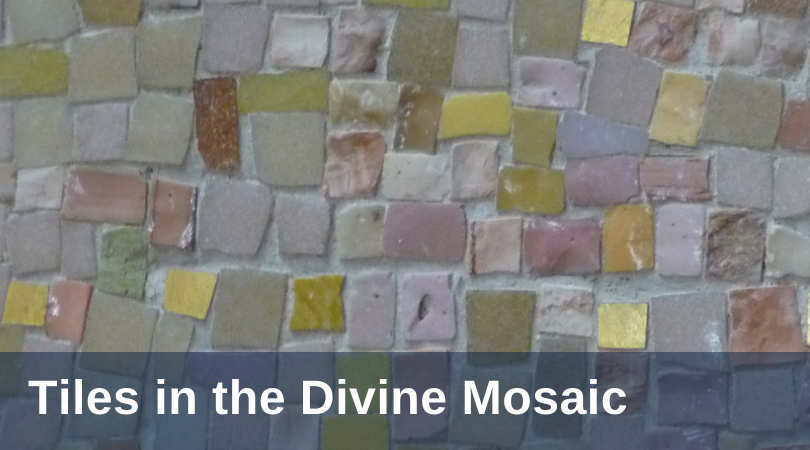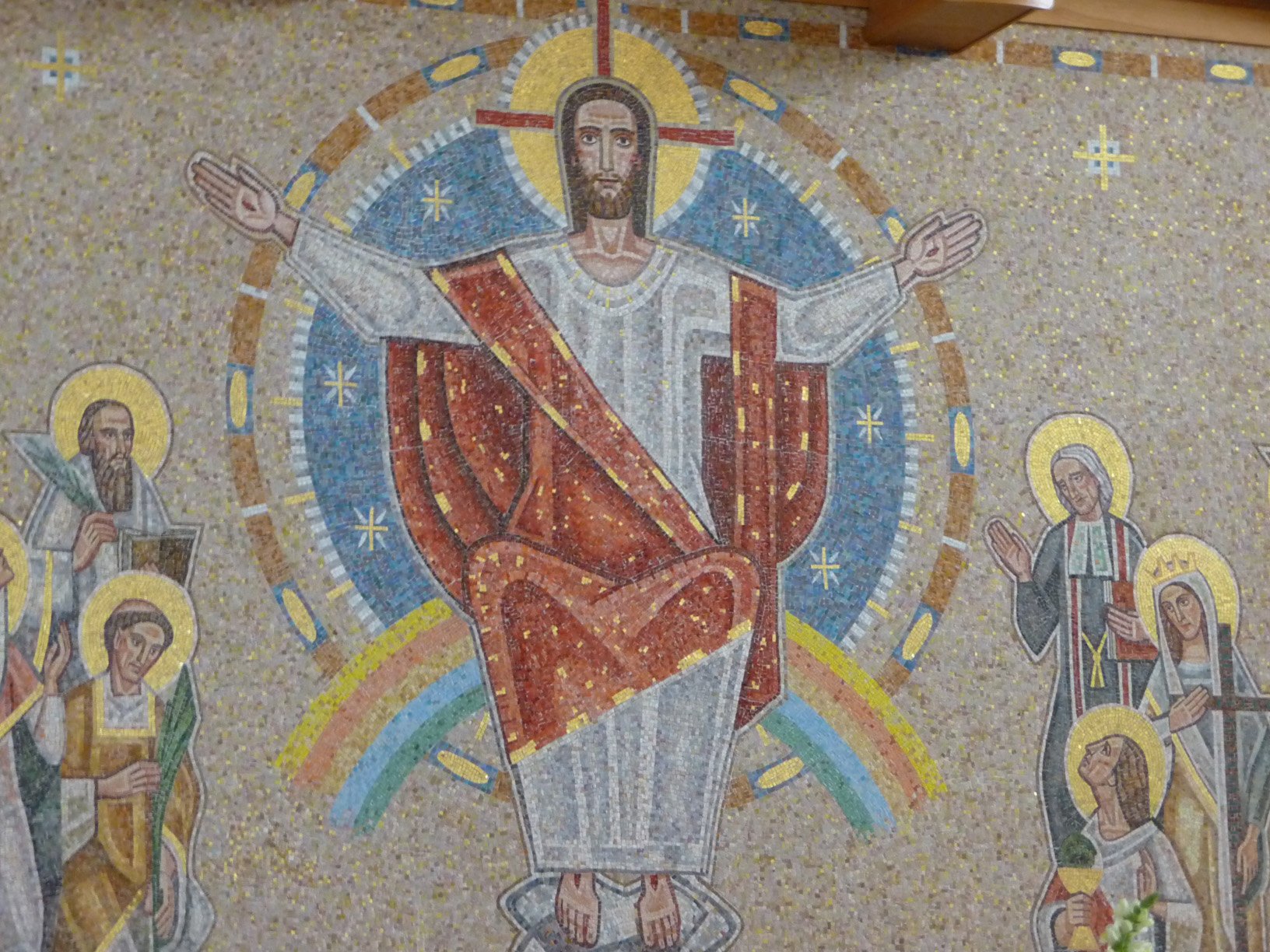
Usually, the experiences that linger prominently in our memories have a special significance. Often, they are associated with an emotionally-charged encounter or an event that profoundly influenced us at the time. But many of these experiences, when revisited through contemplation across the years, continue to affect us and contribute to the person we are becoming.
One memory I particularly cherish is an encounter with sacred art in my “sacramental home”—the church where I was baptized, made my First Confession, received my First Communion, was confirmed, and got married. It was initiated by my favorite priest during a weekday school Mass when I was nine years old. That day, Father’s homily centered on a mosaic placed behind the altar, which depicts the resurrected Christ seated in glory and surrounded by representative saints. Although my schoolmates and I had seen this mosaic many times before, his sermon offered a key to open up a deeper experience of the image.

After Father descended from the altar and got our attention with a corny joke, he drew our curious eyes to the sacred image before us and asked us to look at it more closely. He explained that, like all mosaics, this one was made up of countless small tiles. Creating something so beautiful and large, he explained, required each tile to be carefully planned for and intentionally laid out. It was the work of a master craftsman. Skill and materials, especially mortar, were required to hold everything together. Remarkably, the priest added, no two tiles were identical in shape or color. The mosaic’s beauty was due, not only to the image it presented, but also to the workmanship and palate of colors it incorporated. The proper hues of all shades on the spectrum were needed—including some we would recognize from our Crayola boxes such as burnt sienna, apricot, cornflower, periwinkle, and mahogany. While some tiles accented important features of the composition in gold, the majority were quite plain, yet each was still needed to create the contrast that could properly accentuate the central image. Regardless of the color, placement, and function of each tile, every tile was important. The loss of even one tile would diminish the beauty of the whole.
Through his homily, and through the mosaic, Father led us to understand that the artist was like God, and each one of us is like a tile. Each of us is unique, special, and important to the creator. Each has a special place in the overall design. The goal of our life, then, was to remember that God loves each one of us and thus, we should trust that, given an ever-deepening relationship with him, God will help us to understand how best to live out our part in his divine plan.
This beautiful truth, committed to memory long ago, has sustained me during many phases of my life—through harassments hurled by childhood bullies, through self-inflicted pain and inner questioning during my teen years, and through ongoing values clarification in adulthood. It continues to aid me during the moments when I struggle to live out my vocations as a wife, mother, and professional.
As we develop across the span of our lives, the same mind that retains our memories is profoundly changed as it reacts to education, experiences, relationships, and the actions of the Holy Spirit. Put simply, who we are, how we understand, and what we believe changes and hopefully grows over time. As such, re-engaging certain memories can provide new and beneficial insights. Today my contemplations on this mosaic extend beyond my fixation on a single tile, incorporating my growing appreciation for the body of the Church, the communion of saints, the Totus Christus. God only knows what I will bring to this contemplation in the years to come. But I am heartened by the hope that this memory will continue to bear spiritual fruit in my life as I return to it again and again.
Images courtesy of the author.


